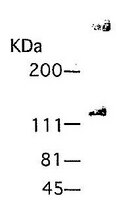CP17 MilliporeAnti-Collagen Type I Mouse mAb (I-8H5)
Recommended Products
Overview
| Replacement Information |
|---|
Key Spec Table
| Host |
|---|
| M |
| Biological Information | |
|---|---|
| Immunogen | purified, human collagen type I |
| Immunogen | Human |
| Clone | I-8H5 |
| Host | Mouse |
| Isotype | IgG2a |
| Concentration Label | Please refer to vial label for lot-specific concentration |
| Physicochemical Information |
|---|
| Dimensions |
|---|
| Materials Information |
|---|
| Toxicological Information |
|---|
| Safety Information according to GHS |
|---|
| Safety Information |
|---|
| Product Usage Statements |
|---|
| Packaging Information |
|---|
| Transport Information |
|---|
| Supplemental Information |
|---|
| Specifications |
|---|
| Global Trade Item Number | |
|---|---|
| Catalogue Number | GTIN |
| CP17 | 0 |
Documentation
Anti-Collagen Type I Mouse mAb (I-8H5) Certificates of Analysis
| Title | Lot Number |
|---|---|
| CP17 |
References
| Reference overview |
|---|
| Karsenty, G., et al. 1991. J. Biol. Chem. 266, 24842. Mayne, R. and Burgeson, R.E. 1987. Structure and Function of Collagen Types, Academic Press, Orlando, FL. Weiner, F.R., et al. 1987. J. Biol. Chem. 262, 6955. Kreig, T., et al. 1985. Ann. N.Y. Acad. Sci. 460, 375. Laurent, G.J. 1985. Ciba Found. Symp. 114, 227. de Wet, W.J., et al. 1983. J. Biol. Chem. 258, 7721. Borsch, A.S. and Byers, P. 1981. Proc. Natl. Acad. Sci. USA 78, 5141. |








